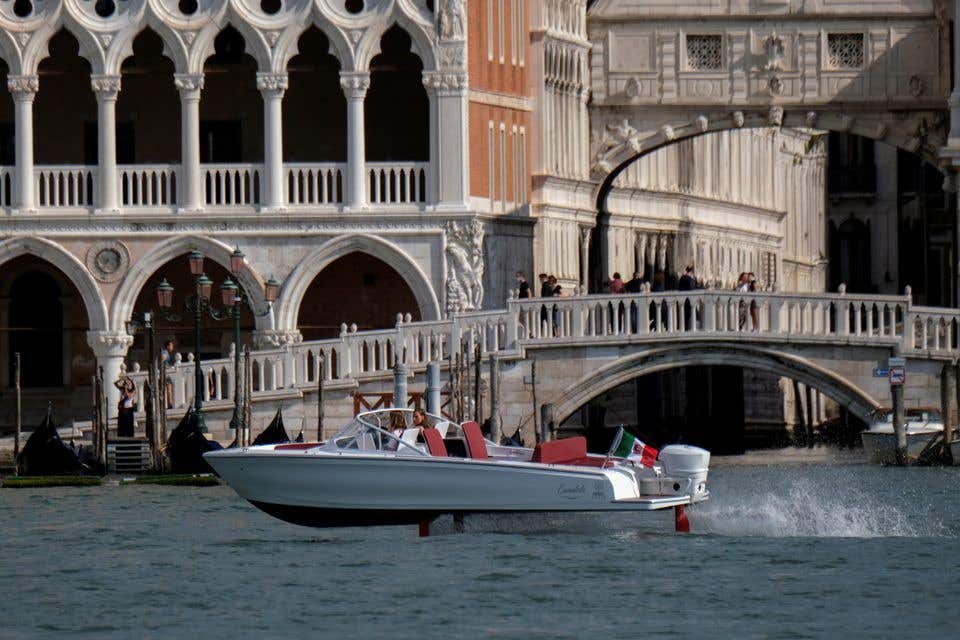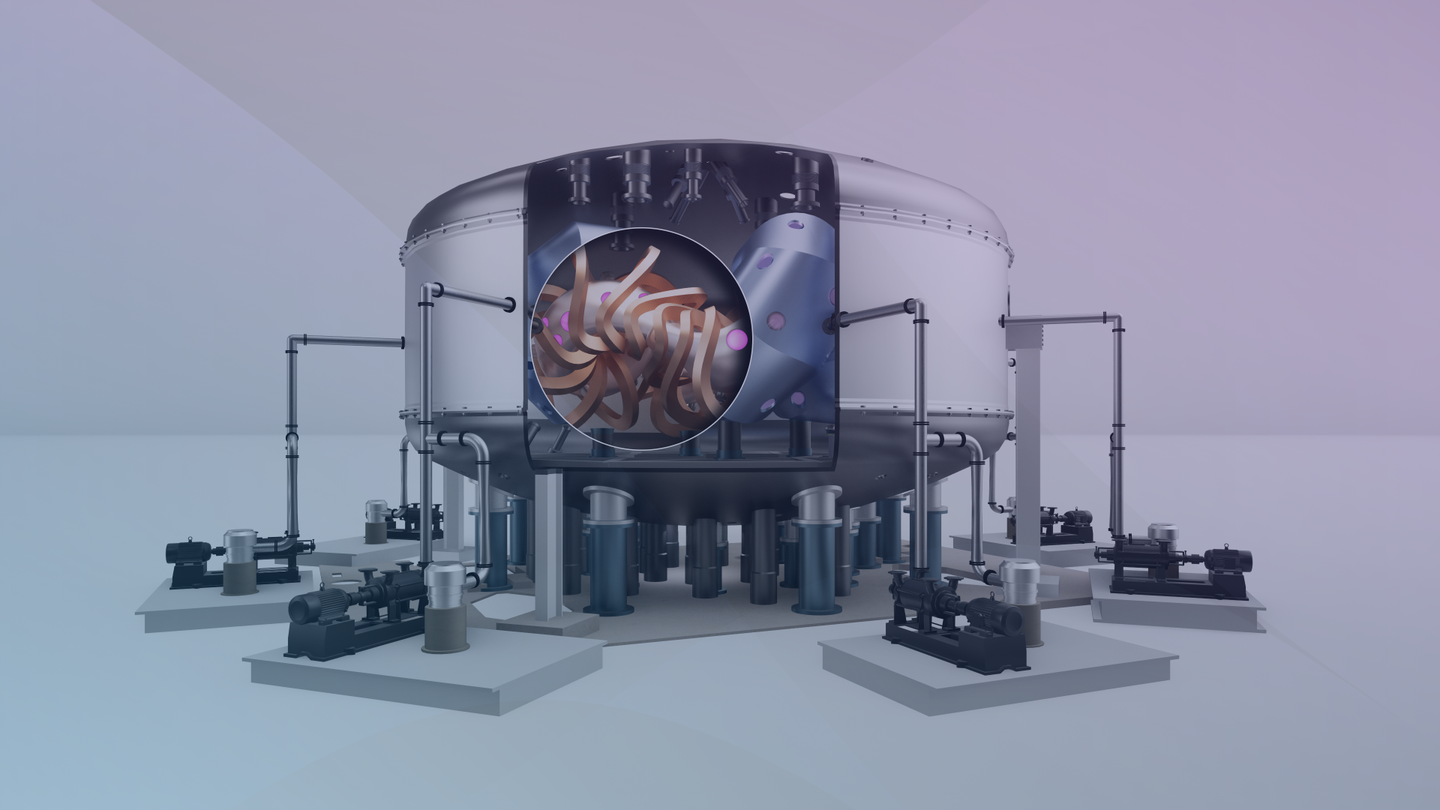Are Flying Electric Boats the key to save Venice?
Let’s face it: Venice is sinking and motorboats are a less commonly-known cause for this, since they create something called Moto Ondoso.

[June 7, 2021: Brad Bergan]
Let's face it: Venice is sinking.
And motorboats are a less commonly-known cause for this, since they create something called "Moto Ondoso": Wake pollution, which has already damaged 60% of the city's buildings. But a company called Candela is about to give a live demo of new water vehicles capable of substantially reducing this damage.
Called the C-7 boats, they use hydrofoils and computer-controlled underwater wings to lift the hull above water, and reduce the trademark mega-wake of motorboats to a manageable 5-cm-high bump in the water. This is roughly the same size as Venice's conventional rowing boats, which is really great.
And, if widely endorsed in Venice, the novel vehicle design could drastically reduce the damage from speedy boats and acidic pollution, according to a blog post from the company.
An all-electric hydrofoil boat reduces drag by 80%
Most culpable for the damage to Venitian cities via water waves are water taxis and tourist boats. When they zoom through the city's slim canals, they create a wake, which slushes up into the foundation and walls of the canal. On a long enough timeline, the energy transferred via water waves accelerates the natural erosion of buildings, bringing them closer to collapse.
Additionally, the majority of motorboat engines don't come with catalytic converters that cars have, which means they pump nitrogen oxides and particulate matter into the air -- which is acidic, and hastens the erosion of Venice's medieval structures, much of which are already sinking into the lagoon. And this sad state of affairs is getting worse with every day of traffic from wake-heavy boats rumbling through the city's canals.
However, the absence of waterway traffic amid the COVID-19 coronavirus has turned some heads, exposed to new ideas from the unusually clear waters, thanks to the lower traffic volume. City-dwellers and officials hope the water can remain clear, and the Swedish tech company Candela will demonstrate its flying electric boats starting on May 29, during the Salone di Nautica, in Venice. The hydrofoils and wings equipped to the bottom of the company's boats decrease the force of friction on the water by 80%, compared to taxi boats. This also optimizes energy usage, and enables silent travel.
Candela's C-7 could help save Venice from sinking
Hydrofoils will likely catch on in the coming years, not least of which because they enable fast travel on battery power without creating a pesky wake, overwhelming noise, or even slamming, according to Erik Eklund, Candela's director of public transport, in the company blog post.
The C-7 can maintain a high cruise speed of 20 knots for more than 2 hours, much longer than comparable electric boats. And instead of slamming into the waves of other boats (which can multiply the wave-energy smacking against Venice's canal walls), hydrofoil boats can soar above the choppiness, which is coincidentally more comfortable for passengers.
Although the C-7 is not the only all-electric hydrofoil boat on the market (nor is it a new idea), the combination of a foil capable of moving 100 times per second to balance the boat, an all-electric battery, and the locale of a sinking and battered city of Venice make the sustainable vehicle more than noteworthy. Anyone near Venice in the following days should check out the live demo.
Like these kind of feel good stories? Get the Brighter Side of News' newsletter.
Tags: #New_Innovations, #Boats, #Green_Good_News, #The_Brighter_Side_of_News
Joseph Shavit
Head Science News Writer | Communicating Innovation & Discovery
Based in Los Angeles, Joseph Shavit is an accomplished science journalist, head science news writer and co-founder at The Brighter Side of News, where he translates cutting-edge discoveries into compelling stories for a broad audience. With a strong background spanning science, business, product management, media leadership, and entrepreneurship, Joseph brings a unique perspective to science communication. His expertise allows him to uncover the intersection of technological advancements and market potential, shedding light on how groundbreaking research evolves into transformative products and industries.



